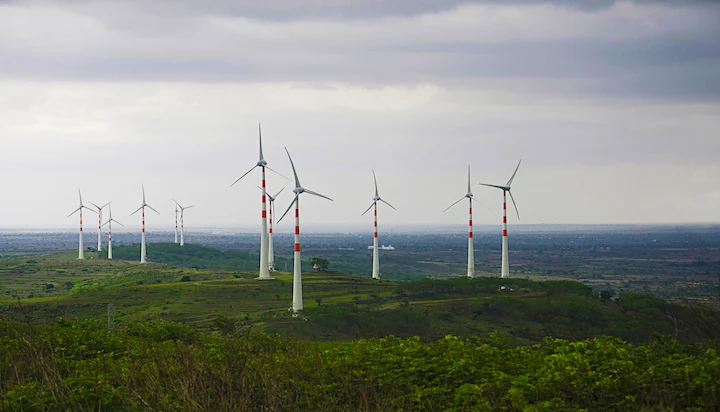To bolster Make-in-India for the solar sector, the Centre recently announced a production-linked incentive (PLI) scheme for solar manufacturing with a budget of Rs 4,500 crore over five years. Basic customs duty of 25% on cells and 40% on panels will also be levied on imported panels starting April 2022. These measures follow a slew of efforts over the past decade to establish domestic solar panel manufacturing. However, several issues remain, including a volatile domestic market and weak industrial innovation capabilities.
Solar panels are mass-produced, where low-costs are achieved through economies of scale, high capacity utilisation factors, and optimisation of manufacturing processes. Leading Chinese manufacturers such as Jinko Solar and Trina Solar have manufacturing facilities with capacities over 10 GW. Indian manufacturers will require time to achieve scale, develop their manufacturing know-how, and become globally competitive. To catch up, they will have to depend on a large and stable domestic market for the next few years.
However, the Indian solar-panel market has been facing headwinds. Annual solar PV deployment peaked in 2017, at more than 9GW, and has stalled since, falling to 3 GW in 2020, thanks to the pandemic. In the short-term, domestic market risks will need to be addressed, including counterparty risk, renegotiation of power purchase agreements, and difficulties with land acquisition. Solar panel manufacturing is a rapidly evolving industry. Manufacturing equipment can become outdated in 2-5 years. To ensure that the Indian power sector benefits from ongoing panel performance and cost improvements, a long-term roadmap to reach the global technological frontier is necessary.
China’s dominance has resulted from several public policy measures. First, the Chinese government provided subsidised manufacturing inputs such as electricity and debt, gradually targeting its subsidies towards manufacturers who were able to achieve scale and efficiency. Second, the aggressive pricing of solar panels at razor-thin profit margins was enabled by gradual vertical integration of the value chain. Third, manufacturers developed their know-how related to manufacturing processes through in-house R&D and learning-by-interacting with production equipment suppliers from Germany, Switzerland and the US.
Policymakers can draw three major lessons from the Chinese experience. First, periodic targets should be set for plant capacity, capacity utilisation factor, module efficiency, price, and R&D investments. Subsidy allocation should be made contingent on meeting these targets, creating pressure on firms to continuously innovate. Second, incentives for cell and module manufacturing should be complemented with measures to develop a manufacturing ecosystem for the entire value chain. This should be done in a phased manner, starting with cell and module manufacturing, and gradually incentivising local manufacturing of wafers, ingots, and polysilicon. Third, manufacturing incentives should be complemented with incentives for both industrial R&D and international collaborative R&D, enabling firms to reach the technology frontier. Historically, solar panel manufacturing has been highly competitive. No single firm—and, until recently, no single country—has been able to capture a high market share over an extended period. While its relatively easy to import turnkey production equipment and set up a manufacturing plant, developing and maintaining a competitive edge will be a slow and uncertain process requiring enormous long-term public subsidies and entailing serious risks.
Addressing the risks requires us to have clarity about the policy goals. If the goal is clean, abundant and cheap electricity, solar panels should simply be purchased from where they are the cheapest (i.e., China). If the goal is job-creation, deployment of decentralised and rooftop solar PV installations should be prioritised, since downstream jobs account for nearly 75% of the employment in the industry. If the priority is strategic localisation of supply chains, manufacturing incentives should be made contingent on periodic, time-bound, realistic and long-term targets that aim to make the domestic industry globally competitive. Additionally, investments should be made into a diversified portfolio of technologies such as lithium-ion batteries, electrolysers for green hydrogen, and energy efficiency technologies as part of India’s green industrial strategy.
Source: financialexpress.com









